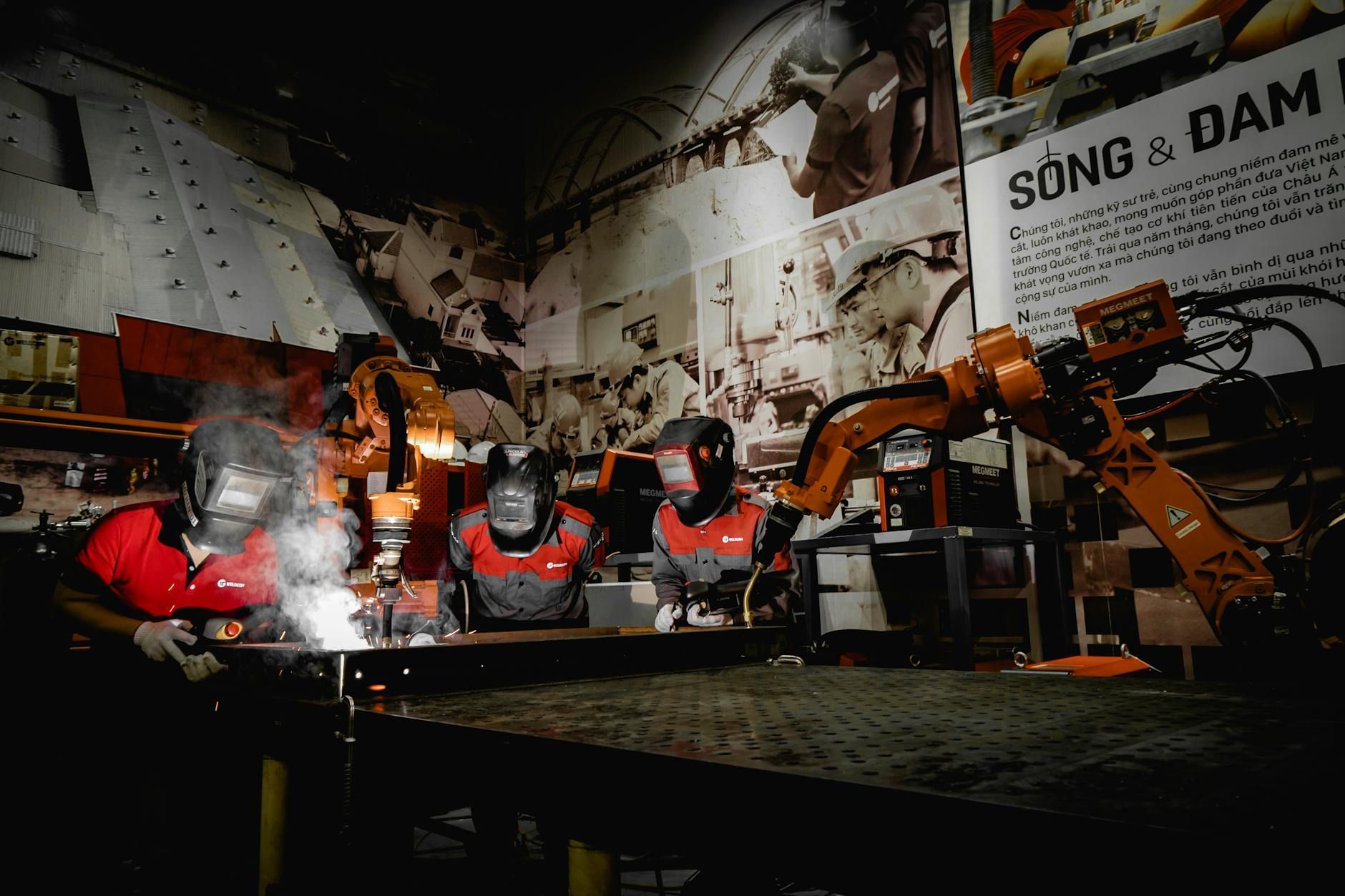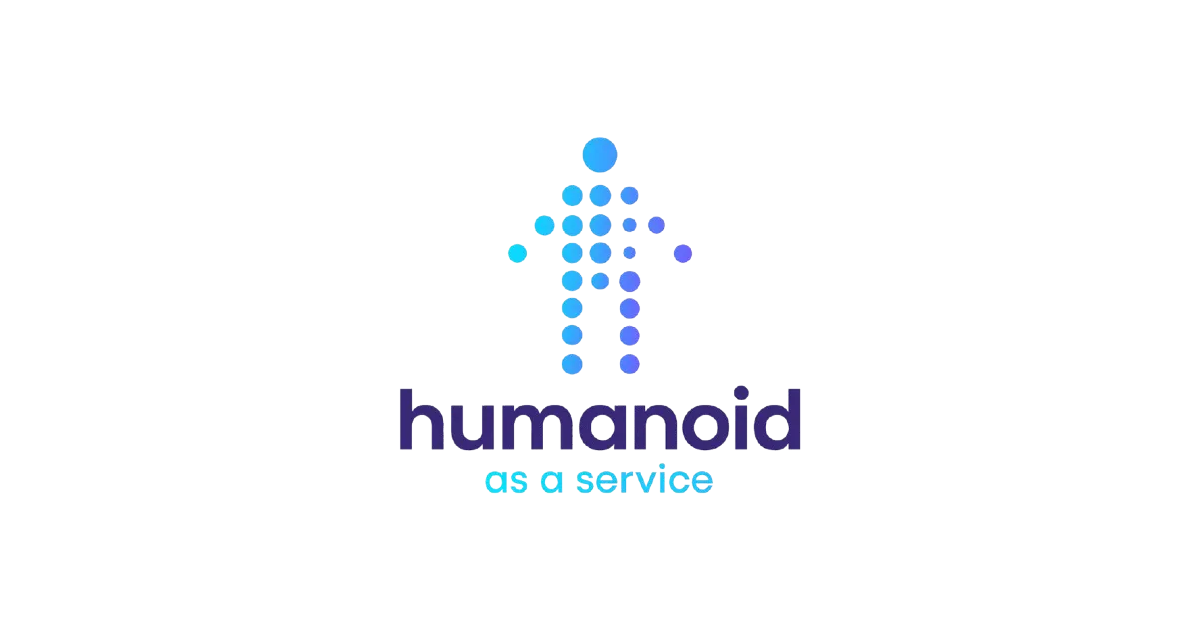Strong Wealth Solutions
Unlock Success with These Workforce Automation Trends
You’ve probably heard plenty of buzz about workforce automation trends lately. As a forward-thinking executive, you know that staying competitive means adopting innovative solutions. Whether you manage a small startup or oversee multiple departments in a large enterprise, automation has the power to drive efficiency and big-picture growth. The real question is: how do you navigate these trends in a way that benefits your organization, your employees, and your bottom line?
Below, you’ll find a deep dive into emerging automation opportunities, plus tips to help you adapt and thrive. You’ll also glimpse the potential pitfalls of automation so you can sidestep common missteps. By the end, you’ll have a roadmap for leveraging AI, robotics, and future-forward strategies to optimize daily operations. Let’s explore the core concepts, the action steps, and the ways you can set up your organization for long-term success.
Embrace changing workforce dynamics
As businesses evolve, it’s natural for day-to-day duties to shift. Gone are the days when a single workflow remained static and predictable for years. Consumer demands, regulatory environments, and new technologies keep teams on their toes. Automation is one of the biggest disruptors, but it also opens opportunities for higher-level thinking.
Understand the basic transitions
- Tasks that once required long hours of manual input can now be completed in seconds.
- AI tools analyze data, respond to emails, or even forecast revenue patterns.
- Teams increasingly shift from repetitive tasks toward strategic planning and creative problem-solving.
When you embrace workforce automation trends, you optimize your human capital. Your employees can focus on projects that genuinely require a human touch, rather than being bogged down by repetitive or low-value tasks.
Re-skill and up-skill
Automation doesn’t eliminate the need for human interaction. In fact, it creates space for staff to learn new skills. Encouraging the development of tech-savvy competencies means your team will stay in sync with automated processes. Consider:
- Offering short courses in data analysis or coding for non-technical staff.
- Building internal mentorship programs so that IT experts guide others through new software.
- Encouraging cross-departmental workshops for fresh perspectives.
Making these shifts helps teams stay confident and nimble, rather than fearful. A forward-thinking leader spots new opportunities for employees to grow as roles evolve.
Spotlight key AI breakthroughs
The rapid rise of AI involves more than chatbots. From advanced analytics to predictive modeling, these breakthroughs influence almost every sector. You’ll see them in healthcare diagnostics, supply chain logistics, recruitment, and beyond. That’s why every organization, from retail to manufacturing, has a stake in AI integration.
Explore critical AI applications
- Natural language processing: Tools that parse emails, analyze sentiment, and handle repetitive queries.
- Machine learning models: Algorithms that spot patterns in large data sets, which can be used for forecasting sales or detecting fraud.
- Computer vision: Systems that interpret visual data, useful for quality checks in manufacturing or security operations.
More advanced capabilities, like generative AI, will continue to shape marketing, design, and research. If you’re only focusing on a narrow set of AI tools, you might miss valuable innovations. Scanning the horizon for the next wave of AI is part of staying relevant.
Balance AI with your human workforce
It helps to remember that AI is an enabler, not a replacement. You want to use AI tools that extend the capabilities of your team. Here are a few ways to keep those tools well-balanced with people:
- Use AI for data crunching, but rely on employees for final decisions.
- Implement real-time analytics dashboards to empower your staff, so they spend less time sifting through raw numbers.
- Identify roles or tasks that would benefit from automation, then guide the transition carefully to maintain morale.
Over time, you’ll see how these workforce automation trends not only save money, but also allow employees to exercise creativity.
Integrate robotics in daily operations
Think beyond traditional assembly lines. Robotics now includes collaborative robots (“cobots”), which work alongside your employees in shared spaces. These bots handle repetitive or physically intensive tasks while your team manages quality control, troubleshooting, and complex decision-making. Even service industries, like hospitality, are testing robots for room delivery, cleaning, or entertainment.
Automate the right tasks
Daily operations often contain repetitive chores that drain your team’s productivity. Examples might include:
- Packaging and shipping repeated orders.
- Performing quality checks where high consistency is required.
- Cleaning or maintaining large facilities where manual labor is time-consuming.
By handing these tasks over to robots, you reduce human error and free employees for higher-value projects. You also minimize workplace accidents and fatigue, which can lead to better job satisfaction overall.
Consider a step-by-step approach
Gradual integration can be more efficient than an all-or-nothing approach. You might:
- Start with small pilot programs in one department.
- Gather feedback from employees and customers about how robotics change workflow.
- Expand to new areas once you’ve refined best practices.
Avoid implementing new robots across multiple sites simultaneously without thorough testing. Large-scale projects are complex, and it’s trickier to troubleshoot when you’re juggling issues in several places at once. Instead, a controlled, phased rollout can help you refine processes and cultivate internal champions who support future expansions.
Expand through robotic process automation
While many people think about physical robots, another major pillar of workforce automation trends involves RPA, or robotic process automation. RPA tools are essentially software “robots” that complete repetitive tasks on your computer systems. These can fill out forms, generate reports, or move data between applications. If you’re frustrated by slow data entry cycles, RPA might be your go-to solution.
The link to your broader strategy
RPA is typically quick to implement. If you’ve never automated tasks before, it’s an easy starting point. And if you’re already using advanced AI, RPA can further streamline operations when integrated with your existing setup. For more insights, you may want to check out robotic process automation , which explores how organizations integrate these software “bots” alongside human-driven workflows.
Keys to success with RPA
- Map out your current processes, identifying tasks that consume time but don’t require human oversight.
- Partner with reliable vendors or an internal tech team to develop custom solutions.
- Plan for software updates, since RPA tools often require maintenance and adjustments to remain effective.
Once RPA is in place, your employees will notice that the tedious, time-intensive chores are handled behind the scenes. Speed, accuracy, and consistency usually rise, leading to happier teams and reliable outputs.
Manage ethical concerns and pitfalls
Automation is promising, but it’s not risk-free. Ethical concerns often arise around privacy, job displacement, security breaches, and bias within AI algorithms. Awareness of these pitfalls helps you build stronger, more responsible automation programs.
Address job displacement fears
One of the first concerns employees have is about losing their jobs to robots or automated software. While some manual roles may decrease, new positions often emerge. These roles focus on overseeing machine performance, analyzing the outputs, and devising strategy with the time saved.
To handle concerns:
- Stay transparent about your automation roadmap.
- Offer training sessions that help employees move into newly created roles.
- Emphasize the human element in your company culture, highlighting collaboration between people and machines.
Tackle security and privacy
AI systems can process mountains of data. That can include personal customer information or confidential financial records. A single vulnerability might give hackers unauthorized access to large data sets. Minimizing these risks requires:
- Proactive cybersecurity strategies, including data encryption and frequent system checks.
- Regular privacy audits to ensure compliance with regulations.
- Clear policies about data usage and storage.
When your employees trust your data management practices, the transition to automation typically unfolds more smoothly.
Watch for algorithmic bias
Algorithms learn from data. If historical data contains biases, the AI might replicate them. This could lead to unfair outcomes in recruitment, promotions, or customer interactions. Keeping your AI models fair involves:
- Sampling diverse training data.
- Testing algorithms for unintended biases.
- Allowing human review of sensitive decisions where bias could appear.
Ethical automation isn’t a single project. It’s an ongoing commitment that sets the stage for long-term stability.
Develop a strategic roadmap
You don’t want to chase every flashy tool or rush to deploy automation without a plan. Building a roadmap helps define priorities, set realistic timelines, and allocate resources where they’re needed most.
Steps to crafting your plan
- Pinpoint high-impact opportunities: Identify where automation will have the greatest effect on cost savings or productivity.
- Develop a phased timeline: Outline smaller pilot projects first, then scale up once you see measurable results.
- Allocate budget and resources: Ensure each step has sufficient funding, equipment, and staff training.
- Create accountability structures: Assign clear ownership for each automation initiative so responsibilities don’t slip through the cracks.
Align with broader business goals
Automating something purely because it’s popular doesn’t always produce real value. Tying every AI or robotics initiative to a specific strategic objective helps keep your team focused. Maybe you need to scale operations without hiring exponentially. Or your main goal might be to reduce operational costs by 20 percent. Keep the purpose clear, and measure how automation contributes to it.
Pilot projects and metrics
Short pilot projects are a low-risk way to explore workforce automation trends while collecting meaningful data. When done correctly, these pilot phases let you fine-tune processes before committing additional resources. They also help you identify the key performance indicators (KPIs) that reveal automation’s real impact.
Conduct small-scale experiments
- Choose a department or a single workflow.
- Define goals, like reducing errors by 50 percent or cutting task time in half.
- Provide basic training for staff involved.
- Monitor performance daily, checking for snags in the process or user-report issues.
After a few weeks or months, gather results and see if automation delivers as expected. If it does, great. If not, identify what held it back and adjust accordingly.
Measure clear KPIs
Automation isn’t just about speed. You’ll want to evaluate:
- Quality improvements (fewer defects or inconsistencies).
- Employee sentiment (higher job satisfaction or reduced burnout).
- Customer feedback (faster response times or smoother order fulfillment).
- Revenue boosts or cost reductions (pegged against your baseline).
Collecting this data is vital. It justifies further investments, silences skeptics, and keeps your entire firm aligned on the benefits.
Shift toward continuous improvement
Automation is never a one-and-done project. Technologies evolve, and so do internal requirements. Forward-thinking executives maintain an agile viewpoint, adjusting to fresh tech breakthroughs and refining internal processes as the market changes.
Build a flexible culture
If your organization resists change, even the best technology could stall. Fostering a culture that embraces updates and improvements means:
- Celebrating small wins: Acknowledge teams that successfully adopt new tools, even if it’s a pilot.
- Encouraging open feedback: Ask teams what’s working, what’s clunky, and what might be improved.
- Adapting quickly: When a tool or approach clearly struggles, pivot swiftly after collecting learnings.
Stay informed about trends
It pays to keep an eye on emerging automation developments. You can assign a tech-savvy champion within each department to monitor relevant news, conferences, or professional networks. These champions might:
- Bring fresh ideas from industry events.
- Suggest new pilot projects or expansions of existing automation.
- Share updates during regular meetings, so everyone is aware of the evolving landscape.
Build cross-functional collaboration
Automation affects more than one department. For instance, marketing may glean insights from AI-based customer segmentation, and HR might automate payroll and applicant tracking. But these departments rarely operate in silos. Data often travels between them.
Encourage department synergy
- Host monthly “automation roundtables” where each team demos their progress.
- Form interdisciplinary committees to tackle bigger automation projects that require input from multiple perspectives.
- Rotate employees between roles if feasible, allowing them to see how automation works in different contexts.
When your teams communicate effectively, you’ll spot beneficial overlaps. That synergy can lead to creative solutions and stronger return on investment.
Collaborate with external partners
Sometimes, you’ll find it beneficial to outsource parts of your automation strategy. Whether you hire specialized consultants or partner with a technology vendor, these external experts often have a broad view of industry norms. They can:
- Offer proven frameworks from similar companies.
- Suggest best practices when you’re exploring a new AI tool for the first time.
- Provide ongoing support with updates, bug fixes, or expansions.
Leveraging outside support doesn’t reduce your internal expertise. Instead, it accelerates learning and helps your team get automation right from the start.
Customize automation for your industry
Not all automation solutions make sense for every sector. Some industries have specialized needs, like regulatory compliance in healthcare or real-time performance monitoring in manufacturing. Others, such as professional services, might rely heavily on intangible, knowledge-driven tasks.
Tailor solutions for compliance
If you operate in a heavily regulated field, ensure your automation program respects all legal standards:
- Maintain thorough audit trails for each automated action.
- Confirm that data storage meets or exceeds industry requirements.
- Make sure employees are trained on compliance procedures related to automated systems.
Capitalize on service-sector tools
In customer service or consulting, you might adopt AI-driven chatbots or scheduling assistants. These tools reduce the back-and-forth for appointment booking, saving your staff precious time. Meanwhile, robust customer relationship management (CRM) software can automatically track leads, enabling your marketing team to tailor follow-ups quickly.
Tap into Humanoid as a Service (HaaS)
Sometimes, your organization needs an end-to-end automation solution that integrates physical robots, AI software, and ongoing maintenance. That’s where something like Humanoid as a Service (HaaS) enters the picture. It’s an approach that bundles the hardware, software, and support into one package. You don’t have to juggle multiple vendors or guess how to update your technology midstream.
Why consider HaaS
- Access cutting-edge robotics without a huge upfront investment.
- Receive ongoing software updates so your AI-based solutions don’t become outdated.
- Rely on a single support channel for troubleshooting, maintenance, or expansions.
When you streamline your automation strategy with an all-in-one model, you can focus on decision-making and growth. The complex technical details fall under the care of the HaaS provider, so you’re free to refine your broader business strategy.
Scale on demand
One of the greatest benefits of a service-based model is the ability to scale up or down. If you’re rolling out a new product line or entering a new market, you can adjust your automation capacity quickly. This flexibility aligns well with the continuous improvement mindset you want to cultivate.
Prepare your workforce for robots
Robots, whether physical machines or AI-driven processes, will shape the future of work. At the same time, your employees are your most important resource. Creating harmony between humans and automation is crucial for long-term success. You want your staff to feel empowered, not replaced.
Communicate thoroughly
Explain the business goals behind automation. Outline the specific benefits employees will enjoy, such as:
- Greater job security due to more efficient operations.
- Opportunities for professional growth in overseeing or managing robots.
- Reduced drudgery and increased focus on strategic or creative tasks.
If everyone understands why these changes are happening, they’ll be more inclined to engage proactively with the new systems.
Offer fair transition paths
Whenever you introduce new bots or AI tools, offer training in parallel. For example:
- A short course on how to monitor the new system’s output.
- On-the-job practice sessions, with a mentor who can answer questions.
- Internal recognition for employees who champion the project and help others adapt.
People want to feel valued. When you provide these pathways, you show that automation is part of a larger plan to strengthen the entire workforce.
Address financial considerations
Budget questions are inevitable. Workforce automation often requires initial capital for software licenses or robot purchases. However, many leaders find that short-term expenses pay off through long-term savings and productivity gains. Be sure to factor all costs and potential returns into your financial models.
Calculate return on investment (ROI)
- Start by estimating how much you currently spend on the manual processes you plan to automate.
- Determine the initial investment (licensing fees, hardware, consulting, training).
- Forecast ongoing costs like maintenance or electricity for physical robots.
- Compare potential gains in productivity, revenue, or accuracy.
A thorough ROI analysis provides clarity. You can present these figures to your stakeholders or board members to get buy-in for new automation projects.
Explore flexible payment models
If large outlays feel risky, consider:
- Subscription-based automation tools (software as a service).
- Leasing equipment instead of buying it outright, which helps conserve capital.
- Bundling multiple automation components through a service provider like Humanoid as a Service.
From a financial standpoint, these options can ease the strain on your cash flow and let you scale at a comfortable pace.
Look ahead to emerging trends
While some workforce automation trends have reached mainstream adoption, others are just beginning to gain traction. By keeping an eye on the horizon, you can prepare for potential disruptions or jump on opportunities ahead of your competitors.
Watch the edge cases
Technologies like quantum computing or advanced humanoid robots might still be in their infancy, but they could eventually reshape entire industries. Virtual reality (VR) and augmented reality (AR) tools might also blend with automation, creating immersive training environments where employees practice tasks with robotic counterparts.
Follow global initiatives
Automation is not an isolated phenomenon. Governments worldwide are researching ways to integrate AI responsibly. Collaborations between universities, private firms, and public institutions might lead to new frameworks that set a higher standard for automation safety and ethics. Being aware of these partnerships or global initiatives could help you fine-tune your strategy well in advance.
Form meaningful partnerships
You don’t have to handle everything in-house. Partnerships with experts can accelerate your automation journey, especially if your internal resources are limited or already stretched thin.
Collaborate with tech specialists
Many technology consultants focus on AI, robotics, or process optimization. They can:
- Evaluate your existing workflows.
- Suggest relevant tools or platforms.
- Provide staff training and documentation.
- Offer long-term support to keep your systems running smoothly.
This is especially beneficial for midsize organizations that lack specialized AI or robotics teams.
Engage with industry peers
Trade associations and professional groups can be gold mines for insights. Whether you join a local business council or an international robotics consortium, you’ll meet people who face similar challenges. Comparing notes on how others overcame staffing or budget issues can steer you away from pitfalls.
Plan for unexpected disruptions
In an ever-evolving business environment, events like natural disasters, market downturns, or tech glitches can derail well-laid plans. But robust automation infrastructure can also act as a buffer, keeping essential functions running smoothly when humans can’t be on-site.
Strengthen resilience with automation
When you rely on automated workflows, your operations are less vulnerable to human absence or abrupt crises. For instance:
- A severe weather event might limit employee access to the office, but automated processes continue.
- AI-driven chatbots handle customer service when staff are offline.
- Automated quality checks can keep production lines operating even if some team members are pulled away.
Develop a backup plan
No system is foolproof. Outline a business continuity plan that includes:
- Redundant servers or backup cloud environments for your AI solutions.
- Regular data backups for your robotic networks and software.
- Clear instructions on switching back to manual operations if necessary.
Planning for disruptions provides peace of mind. You’ll have a roadmap for worst-case scenarios, ensuring minimal downtime and quick recoveries.
Reflect on the human side
Amid all the dazzling technology, remember that automation ultimately serves people. Your customers benefit from faster response times, your employees enjoy new career paths, and you as a leader gain more bandwidth for strategic thinking. Keeping the human angle front and center helps you design automation programs that truly resonate.
Maintain empathy in decision-making
It’s tempting to evaluate automation purely by the numbers. Yet, employees’ feelings about automation can influence adoption rates. When you approach your teams with empathy:
- Ask them about bottlenecks they want to solve, so you’re focusing on real issues.
- Get feedback on new tools early, and adjust based on their experiences.
- Recognize emotional impacts, like anxiety about AI or robots taking over, and address them openly.
Balancing ROI with employee well-being ensures your automation program stands the test of time.
Celebrate successes
After you implement new workflows or deploy a fresh AI model, pause to celebrate. Recognizing achievements acknowledges the effort your teams put in, which fosters a positive culture. You might:
- Host a brief awards ceremony for the departments that contributed.
- Outline the improvements in a company-wide email, highlighting the direct benefits to employees.
- Invite employees to share their favorite new automation perks.
Small gestures like this enhance morale and encourage buy-in for the next phase of innovation.
Take actionable steps now
You’ve gathered a wealth of info on workforce automation trends, from AI breakthroughs to robotics and beyond. The logical next step is to transition from research into action. Whether you’re eyeing a small pilot project or want a large-scale solution, you don’t have to do it alone.
- If you’re curious about advanced robotics, consider exploring a partnership through Humanoid as a Service (HaaS).
- Want a general overview of how RPA fits into your mix? Check out robotic process automation for context and examples.
- Looking for immediate guidance on customizing automation for your unique needs? Book a free consultation or Get started here: https://www.humanoidasaservice.com/get-started.
Final wrap-up
Automation doesn’t just mean installing a few AI tools or rolling out a couple of robots. It’s a journey that involves your entire organization. With each small step, you learn more about which elements truly push the business forward. Over time, you refine, expand, and find harmony between human ingenuity and machine efficiency.
Remember, a thoughtful automation strategy can multiply your team’s strengths, reduce mundane tasks, and keep you competitive in a rapidly shifting marketplace. By acknowledging potential pitfalls, nurturing a culture of continuous learning, and testing new ideas with pilot projects, you’ll position your company at the forefront of emerging workforce automation trends.
Now is the perfect moment to turn those insights into a tangible plan. Revisit your core business objectives, rally your team around key priorities, and invest in the tools that make sense for you. The future holds endless possibilities for companies willing to adapt.
So go ahead: map your architecture, test your pilot, and watch the benefits unfold. If you need help orchestrating it all, reach out for that free consultation. Let’s push the boundaries of what’s possible and build a resilient, forward-facing organization together.
SHARE THIS POST:
Leave A Comments:
Our Recent Posts:
Transform Your Workforce
Experience the future of work today. Book a pilot project or demo to see how humanoid automation can elevate your operations.








